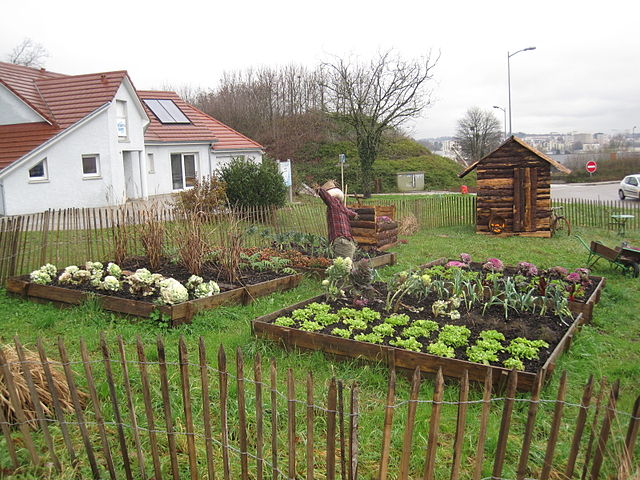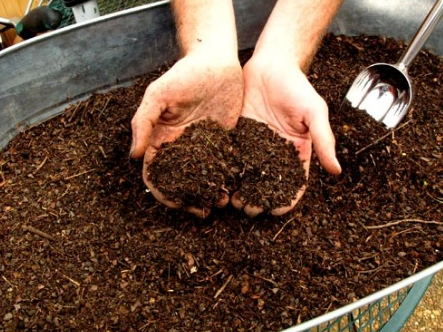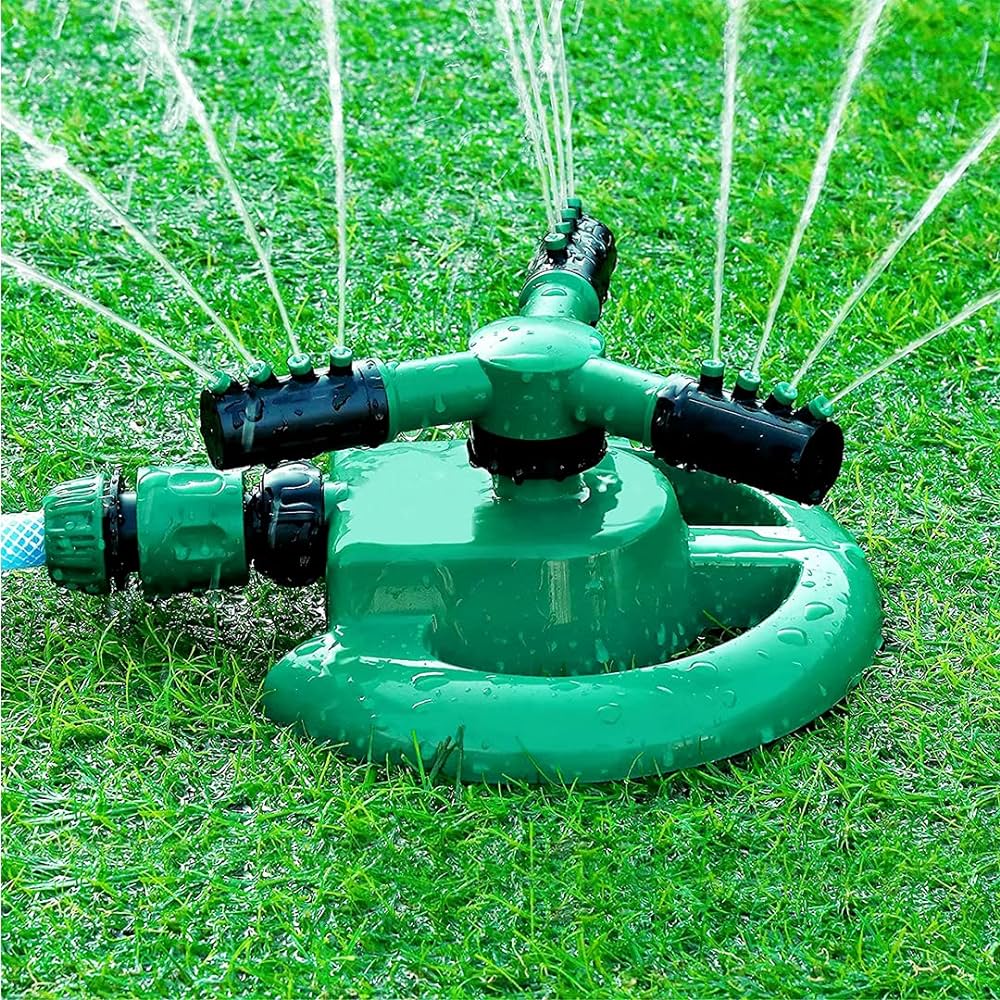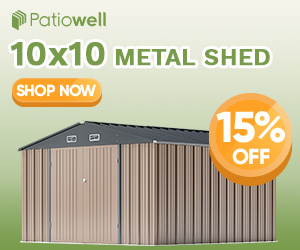All right so you’re looking to start a garden. Well what do you need to do? Where do you start? I was out just getting our garden all set up this year and I thought I would kind of walk through some of the steps if you’re just getting into gardening. Or it’s been a long time since you’ve had a garden and you want to get started, whether you’re in a country setting, a suburban setting, an apartment wherever you are and you’d like to just learn to start. And there’s so many ways to garden, whether you have smaller large spaces, whether there’s container gardening, raised bed gardening or traditional gardening. And I have a combination of all.
So where do you start? So the first thing you need to figure out when you’re looking to start a new garden is where are you going to put it? You need to pay attention to your yard and especially pay attention to where you get the most amount of sunlight. Generally, most of your crops that you’re going to grow are going to do well in full sun. Some crops like leafy greens and other things are going to do ok in part shade also. But generally everything will do pretty good in full sun with very few exceptions. So there are actually a few different apps that you can get for Android or iPhone that you can use to track the sun path during different times of the year. So even if you’re planning your garden out in the winter time, you can use the app to set it to let’s say July and figure out exactly where the path of sun is going to be in your yard. You want to use that to figure out where you’re going to get the best amount of sunlight. Once you have a place picked out in your yard and you’re ready to get started.

You need to figure out what you’re going to grow now. Generally people, especially new gardeners, you want to go to the seed store and you look at all these great seeds on on the rack or whatever at Home Depot or Ace Hardware, or whatever it is that you go and you’re going to want to just pick out a whole bunch of stuff. Oh, that looks good. Oh, that looks good. I want to try that. I want to try that. There’s nothing wrong with trying new things, but I would encourage you to stay focused on things that you eat, things that you eat the most and also things that you can preserve so pay attention to what your family is using the most of. If you guys have salads every day, you want to grow a lot of salad greens. If you guys eat a lot of tomato or tomato products, you want to grow a lot of tomatoes. It’s always great to try and experiment with new things, but you also just want to make sure the core of what you’re growing are things that you’re going to use.
There’s nothing worse than planting a garden, weeding it, taking care of it all summer long, and then not really wanting to eat half the stuff you grew when it comes to August or September.
So once you have some things picked out, it’s time to look at seeds. Now the best thing to do is buy your seeds earlier in the year. So even during the winter time months, especially if you’re in the northern climates, you can get better deals on seeds. Usually then and I would recommend getting stuff online a little bit early if you can.

So once you have your seeds it’s time to figure out which things you need to start inside and which things that you can direct sow in the ground. Now this really varies on where you live here in the northern climates. We’re going to want to start some things inside. Any of your hot weather crops, peppers, tomatoes, melons, any of the things that on the seed packet. It says the harvest is longer than 90 days. You want to make sure that you get those things started inside and it’ll tell you on the seed packet if they’re 100 and twenty- day harvest then you want to make sure that stuff has started inside. You want to make sure that you start those things early in the northern climates, if you don’t start your tomatoes and peppers early, you’re probably not going to get a very good harvest. Now, if you’re in the warmer climates down south, you don’t have to worry too much about that. You can probably start a lot of your seeds right in the ground in March or April.
So now it’s time to prepare your garden space. There’s so many different ways to do this. You need to make a decision? Are you going to do raised bed gardens? Or are you going to do a traditional garden? Now there’s lots of benefits to both.
Traditional gardening is easy. You can till up a small spot of land with a shovel or rake. You know whatever you want to do. If you have a a motorized tiller you can till up a patch of land and you can start gardening. You can amend the soil a little bit, maybe with some compost or some other things where you’re planting and you’re ready to go. Raised bed gardening has a lot of great benefits but you do have to purchase wood and build the raised beds or buy the raised beds and then you have to fill them with soil. Even though they are a great way to go, if you’re just getting started, don’t be discouraged and pumping a bunch of money into your garden. It’s easy to start with traditional gardening. If you’ve got the extra money in time and you want to get those raised beds set up, they’re a little bit better long term investment and they’re a little easier as far as weeding and caring for the garden throughout the year.

Now we talk about soil amendments. What kind of soil do you need? Can you just throw stuff right in the ground? Do we need to do anything with the soil? I would definitely encourage you to do some type of amendment to your soil. Whether you’re going to do a soil mix in a raised bed or just traditional gardening with tilling in some manures and other organic matters, you don’t need to get as scientific as having your soil test and all that kind of stuff. But generally the more organic matter you have, the better. If you have a local farm and you can get a load pickup truck, loaded of compost or something like that and mix it in with your soil, that would be a great way to start. If you want to just go small and be real basic, go to your Home Depot or low’s or whatever. Your Home Improvement Store is Ace Hardware and pick up a bag of play sand, a bag of peat moss and two bags of manure compost. Mix it together and you’re going to have a great soil mix. So that’s just a real easy, kind of bagged way to go. And you can use that to amend soil or even fill a raised bed. We can’t talk about that without talking about compost. If you haven’t already started a compost pile, start one right now. It’s one of the easiest and cheapest ways to get yourself some really good soil every single year for your garden. Kitchen, scraps, yard waste, tree clippings, leaves, whatever you have around. You can use that in a very simple composting method without any fancy bins or barrels or anything like that. Take a section of your corner on your yard somewhere, and make a pile that’s all you need to do. Make a pile. Turn it once or twice a year with a pitchfork shovel, and you’ve got yourself some good compost in one year’s time. Nothing fancy about it. Very easy to get started, and it doesn’t require any special bins or plans, or anything like that. Mix it in with your soil, whether it’s locally right around each plant or tilling it into your whole traditional garden section, or whether mixing it in with a raised bed. That fresh compost is a great way to get nutrients to your plants all right. So you’re ready to get started.

There’s lots of different ways to plant various kinds of vegetables. I’m not going to go through, how to plant everything. Generally the best thing to do is to look at the back of your seed packets. A detailed description on what the seeds are going to grow for you, what they’re used for, what the vegetables are used for and how to plant them. Follow that and you’ll be in good shape.
One thing you want to pay attention to when you’re planting is your sunlight. If you’re going to grow a bunch of very tall things like corn or sunflowers or other tall vegetables or trellising things, you don’t want to have that on the south side of your garden where it’s going to be shading the rest of your crops. So on the north side of all your garden patches where you’re going to want to have all of your tallest stuff, the shortest things should go on the south side. That’s going to make sure that as the sun is tracing across the sky that you don’t get anything shaded in your garden for longer than just maybe half an hour or so, the shade the shadows will move through your garden very quickly and they’ll be very short. And then you won’t have trouble with things not getting sunlight.
Caring for your garden is extremely important. Once you have things in the ground, you’re not done. The biggest mistake that gardeners make especially first-year gardeners is letting weeds get away from you. You have to stay out there as soon as you’ve planted. Not more than one week should go by before you get back out into your garden and make sure you’ve picked all the little weeds that are going to start coming up, especially if you’re using a fresh yard or manure compost. You’re going to have lots of little grass seeds and things like that that are going to be coming up. Get on that stuff right away and you won’t have trouble with weeds. Your plants are going to grow better and you’re going to feel a lot better about what you’ve done. Another other thing you can do to control weeds is what I’ve done in our whole garden here and use wood chips. Wood chips are a free resource in our area. Almost every city that I’ve been to has some type of a collection point for all their tree waste. They go in trim trees throughout the year and piles of this stuff you can go take it for free. If your city doesn’t have that check your neighboring cities, you probably will find something somewhere. This wood chip mulch is an excellent way to keep weeds down between plants. We cover our entire gardens with it every year around all of our plants. It works very, very well.

Water, water, water, water is very important, especially for a young garden. Roots are very fragile. Things are very small. Seeds need to be, you know, while they’re germinating, they have to stay wet. It’s great to get yourself a fan sprinkler. Fan sprinklers I have found to be the absolute best way to water a garden unless you’re going to use some type of a permanent irrigation system with drip irrigation or something like that. Fan sprinkler are easy to move. They are very gentle on your garden. They cover a very large space. They’re great for seedlings as well as adult plants. Get yourself a good fan sprinkler. If you don’t have a good sprinkler, you’re not go to water your garden enough and things are not going to go well, you’re not going to have time to hand water everything.

Once your plants are established and they are nice and tall, they don’t need to be watered quite as much. It’s not going to hurt to water them every other day, but you probably could get away with going on a vacation for a few days as long as it’s not too hot and dry and not watering your garden. But if you are going on vacation for more than a week or even a week, make sure that you have somebody stop by and turn your sprinkler on at least one of those days, especially if it’s hot and dry. We’ve made the mistake before of not watering and came back to a dead garden. So you want to make sure that everything stays nice and moist and watered. Keep those weeds down and you’re going to end up having a great harvest when the time comes in July, August and September. Harvesting time is the reward of all the work and all the time and all the waiting. It’s a great time be prepared for what you’re going to harvest. Make sure that you have canning supplies ready. Make sure that you have ways to preserve the things that you have. If you’re going to do vacuum sealed and freezers or you’re going to do canning, or you’re going to make things into jellies or jams or spaghetti sauces or whatever plan ahead weeks ahead of your harvest time. If you’re up in the Northern Hemisphere like we are, you’re not going to start getting tomatoes probably until August at the earliest, and August and September even into October sometimes. Be prepared to you’re gonna have a whole lot of stuff coming in at once and you want to be ready to preserve that stuff. There’s nothing worse than growing a big, healthy garden all year long and then wasting so much food because you didn’t have time to preserve it. Think of easy ways. Freezing and vacuum sealing is one of the best ways to go. Enjoy your harvest and home grown fruits and vegetables.

I hope you find this article useful and helpful. It should help you start gardening if you are a beginner. Thank you for reading and if your find this article useful make sure to share with friends and family.

